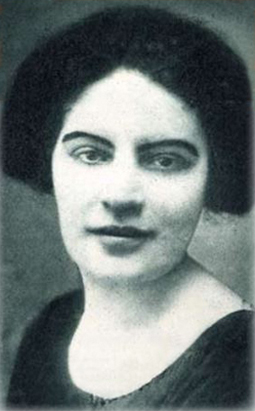Vukosava Velimirović facts for kids
Quick facts for kids
Vukosava Vuka Velimirović
|
|
|---|---|
 |
|
| Born | June 30, 1888 Pirot, Kingdom of Serbia
|
| Died | December 12, 1965 (aged 77) |
| Resting place | Belgrade |
| Nationality | Serbian |
Vukosava Vuka Velimirović (born June 30, 1888 – died December 12, 1965) was a very important Serbian artist. She was the first Serbian woman to become a sculptor! She also wrote stories for children, drew pictures, wrote about art, and translated books. She was one of the most famous sculptors of her time, known around the world between the two World Wars.
Contents
Her Life and Art Journey
Early Life and Artistic Beginnings
Vukosava Velimirović showed her artistic talent from a young age. When she was little, she wrote songs and fairy tales. She also drew cartoons for children and shaped things from clay. It was clear even then that art would be a big part of her life.
She grew up in a family that valued learning. Her two older brothers studied in Moscow and St. Petersburg. The family often received letters about new discoveries in science and art from around the world.
In 1911, Vukosava's family moved to Belgrade. Her father, Miloš, was transferred there for his work. Soon after arriving, Vukosava enrolled in the Arts and Crafts School. This is where her artistic journey truly began.
Studying Art in Belgrade and Beyond
Vukosava was part of a very talented group of students at the Arts and Crafts School. Many other great artists, like Zora Petrović, also attended this school.
At that time, society in Belgrade was changing. New opportunities were opening up for women to be creative. Vukosava Velimirović, as a woman sculptor, gained a lot of public attention.
She studied art not only in Belgrade but also in Rome and Paris. She spent most of her time in Paris between 1918 and 1940. There, she met other famous female sculptors, including Camille Claudel.
Her Famous Sculptures and Beliefs
Vukosava was known for her small, energetic bronze sculptures. Many of these showed poor children who had lost their parents in wars. As an artist, she believed strongly that art should reflect important events and issues in society.
She also worked hard to support equal rights for women in Serbia. She wanted to see more equality for everyone.
Around 1924, some of her most famous works were displayed. These were five decorative sculptures placed on the outside of the Vračar Holding Bank in Belgrade. At the time, creating sculptures for buildings was mostly done by men. But Vukosava's work proved that women could excel in this field too.
Vukosava Velimirović also had a successful career creating portraits. She made sculptures of important and wealthy people from across Europe.
See also
 In Spanish: Vukosava Velimirović for kids
In Spanish: Vukosava Velimirović for kids

